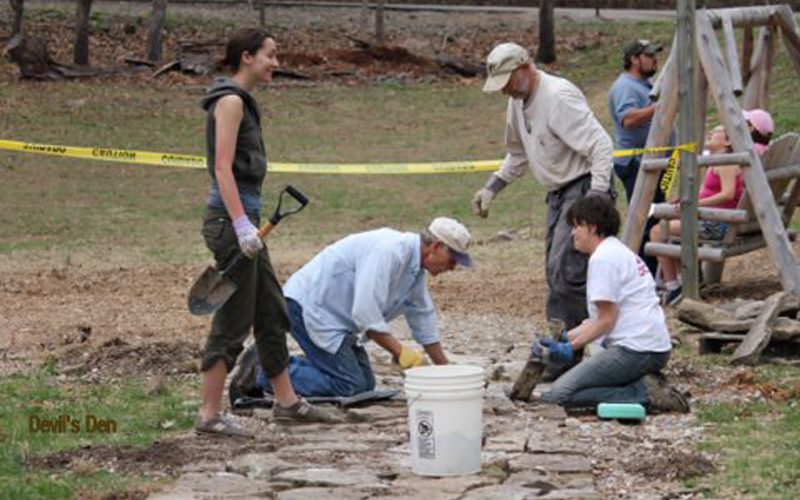
A class of Northwest Arkansas Master Naturalists-in-Training spend time outdoors learning about nature.
There’s a big difference between loving the earth and knowing what critter just landed on your shoulder for a hug. Let’s say that you’re out in nature, enjoying a beautiful spring day, when suddenly a gray cloud floats by in your brain: you aren’t sure how to build that birdhouse or platform feeder to bring songbirds into your yard. Or maybe you want to harvest wild mushrooms but can’t tell what’s edible. If so, the Northwest Arkansas Master Naturalists have sunshine for your cloudy puzzlement!
There’s a whole ton of people eager to answer your questions and get you out in nature more often. It’s really a gift for people who are just beginning their journey to a more sustainable lifestyle and aren’t ready to play Romeo and Juliet with wild edibles. The program is also vital to sustaining and conserving our natural areas — volunteer master naturalists build trails, birdhouses and provide educational programming to all ages. “NWA Master Naturalists are making a difference in preserving our beautiful natural heritage through table-top presentations, stream teams, building and maintaining trails, and many other activities,” says Gary Culp, President.
The Northwest Arkansas Master Naturalist-in-Training program runs annually and gives trainees a foundational knowledge they can hone with advanced training for a lifetime. This year, naturalists-in-training (or NIT’s, as they’re fondly called) are learning about a wide range of topics, and the program is so popular that it’s completely full until next year. Topics include geology, mycology, ornithology, ichthyology, herpetology, botany, mammalogy, entomology, astronomy, environmental interpretation, and information about local habitats like prairies and watersheds. Besides learning about nature, you meet people who have been at it for decades — our own local Aldo Leopolds, Rachel Carsons, and Thoreaus.
I just joined the program this year and already I have a name for the creatures that live on the steps outside my door. They aren’t “little rainbow lizards,” but American five-lined skinks (Plestiodon fasciatus) darting about with eastern fence lizards (Sceloporus undulates). My knowledge of fish has greatly expanded from its starting point of nearly zero. I also learned about mammal skull identification, and can identify beaver, opossum, armadillo and more.
Training is held half indoors and half outdoors, at fun places like Hobbs State Park Visitor’s Center, Ozark Natural Science Center, and Chesney Prairie. If you haven’t been to many of Northwest Arkansas’ natural areas, this is a great opportunity to carpool with classmates and get an in-depth tour of many diverse habitats. You might learn about the history of how the Ozarks formed and why we have the kinds of species we have here. Or you might spend an evening learning how to call the owls and frogs. Former president, Steve Sampers, noted during last weekend’s Master Naturalist retreat to the Ozark Natural Science Center that “I can’t save the world, but I can save my backyard.”
Ripples innovates solutions that maximize positive ripples in the world. We operate a 100% solar-hosted website with resources and services for individuals and non-profit organizations. For more information, visit: www.RipplesBlog.org.










